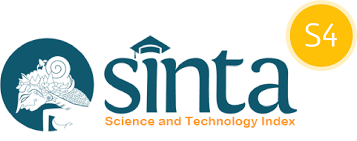Healthcare Diseases Classification Based on Machine Leaning Algorithms: A Review
DOI:
https://doi.org/10.34010/injiiscom.v5i2.13581Keywords:
Communicable Diseases, Non-Communicable Diseases, Healthcare, Machine Learning AlgorithmsAbstract
Researchers have increasingly focused on applying machine learning algorithms to enhance healthcare operations in the past few years. Machine learning has become increasingly popular and has shown to be a viable strategy for raising the standard of healthcare, preventing disease transmission and early disease detection, reducing hospital operational expenses, aiding government healthcare programs, and enhancing healthcare efficiency. This review offers a succinct and well-structured summary of machine learning research that has been done in the field of healthcare. Specifically, the emphasis is placed on the examination of non-communicable illnesses, which pose a significant risk to public health and rank among the primary contributors to global mortality. Moreover, the COVID-19 pandemic, which is among the world's deadliest illnesses and has recently been formally declared a public health emergency, is included. This study aims to assist health sector researchers in choosing appropriate algorithms. After conducting a comprehensive investigation, it was shown that the Decision Tree (DT), Gaussian Naive Bayes (GNB), and Random Forest (RF), algorithms had the highest performance in healthcare classification, achieving a remarkable accuracy rate of 100%. In most tests, the Random Forest (RF) and Support Vector Machine (SVM) demonstrated consistently better performance
References
Ahmed, H., Younis, E. M., Hendawi, A., & Ali, A. A. (2020). Heart disease identification from patients’ social posts, machine learning solution on Spark. Future Generation Computer Systems, 111, 714-722. doi: 10.1016/j.future.2019.09.056.
Al-Azzam, N., & Shatnawi, I. (2021). Comparing supervised and semi-supervised machine learning models on diagnosing breast cancer. Annals of Medicine and Surgery, 62, 53-64. doi: 10.1016/j.amsu.2020.12.043.
Ali, F., El-Sappagh, S., Islam, S. R., Kwak, D., Ali, A., Imran, M., & Kwak, K. S. (2020). A smart healthcare monitoring system for heart disease prediction based on ensemble deep learning and feature fusion. Information Fusion, 63, 208-222. doi: 10.1016/j.inffus.2020.06.008.
Almansour, N. A., Syed, H. F., Khayat, N. R., Altheeb, R. K., Juri, R. E., Alhiyafi, J., ... & Olatunji, S. O. (2019). Neural network and support vector machine for the prediction of chronic kidney disease: A comparative study. Computers in biology and medicine, 109, 101-111. doi: 10.1016/j.compbiomed.2019.04.017.
Alshayeji, M. H. (2023). Early Thyroid Risk Prediction by Data Mining and Ensemble Classifiers. Machine Learning and Knowledge Extraction, 5(3), 1195-1213.
Alves, M. A., Castro, G. Z., Oliveira, B. A. S., Ferreira, L. A., Ramírez, J. A., Silva, R., & Guimarães, F. G. (2021). Explaining machine learning based diagnosis of COVID-19 from routine blood tests with decision trees and criteria graphs. Computers in Biology and Medicine, 132, 104335. doi: 10.1016/j.compbiomed.2021.104335.
Anon. n.d. “Cardiovascular Diseases.” Https://Www.Who.Int/Health-Topics/Cardiovascular-Diseases#tab=tab_1.ACCESSES.2023
Arowolo, M. O., Ogundokun, R. O., Misra, S., Agboola, B. D., & Gupta, B. (2023). Machine learning-based IoT system for COVID-19 epidemics. Computing, 105(4), 831-847. doi: 10.1007/s00607-022-01057-6.
Basha, Y. H., Nassif, A. B., & AlShabi, M. (2022, June). Predicting heart failure disease using machine learning. In Smart Biomedical and Physiological Sensor Technology XIX (Vol. 12123, pp. 75-84). SPIE. doi: 10.1117/12.2632634.
Bayat, V., Phelps, S., Ryono, R., Lee, C., Parekh, H., Mewton, J., ... & Holodniy, M. (2021). A severe acute respiratory syndrome coronavirus 2 (SARS-CoV-2) prediction model from standard laboratory tests. Clinical Infectious Diseases, 73(9), e2901-e2907.doi: 10.1093/cid/ciaa1175.
Behera, M. P., Sarangi, A., Mishra, D., & Sarangi, S. K. (2023). A Hybrid Machine Learning algorithm for Heart and Liver Disease Prediction Using Modified Particle Swarm Optimization with Support Vector Machine. Procedia Computer Science, 218, 818-827. doi: 10.1016/j.procs.2023.01.062.
Chaganti, R., Rustam, F., De La Torre Díez, I., Mazón, J. L. V., Rodríguez, C. L., & Ashraf, I. (2022). Thyroid disease prediction using selective features and machine learning techniques. Cancers, 14(16), 3914. doi: 10.3390/cancers14163914.
Chaganti, R., Rustam, F., De La Torre Díez, I., Mazón, J. L. V., Rodríguez, C. L., & Ashraf, I. (2022). Thyroid disease prediction using selective features and machine learning techniques. Cancers, 14(16), 3914. doi: 10.3390/cancers14163914.
Chaithra, A. S., Chandana, D. K., Chetana, S. M., & Greeshma, N. (2022, December). Risk Prediction of Chronic Kidney Disease Using Machine Learning Algorithms. In International Conference on Data Science, Machine Learning and Applications (pp. 333-338). Singapore: Springer Nature Singapore. doi: 10.1007/978-981-99-2058-7_30.
Chang, H. K., Wu, C. T., Liu, J. H., Lim, W. S., Wang, H. C., Chiu, S. I., & Jang, J. S. R. (2019, June). Early detecting in-hospital cardiac arrest based on machine learning on imbalanced data. In 2019 IEEE International Conference on Healthcare Informatics (ICHI) (pp. 1-10). doi: 10.1109/ICHI.2019.8904504.
Chauhan, U., Kumar, V., Chauhan, V., Tiwary, S., & Kumar, A. (2019, July). Cardiac arrest prediction using machine learning algorithms. In 2019 2nd international conference on intelligent computing, instrumentation and control technologies (ICICICT) (Vol. 1, pp. 886-890). doi: 10.1109/ICICICT46008.2019.8993296.
Devi, M. S., Kumar, V. D., Brezulianu, A., Geman, O., & Arif, M. (2023). A Novel Blunge Calibration Intelligent Feature Classification Model for the Prediction of Hypothyroid Disease. Sensors, 23(3), 1128. doi: 10.3390/s23031128.
Dietterich, T. G. (2000, June). Ensemble methods in machine learning. In International workshop on multiple classifier systems (pp. 1-15). Berlin, Heidelberg: Springer Berlin Heidelberg.
Dritsas, E., & Trigka, M. (2022). Machine learning techniques for chronic kidney disease risk prediction. Big Data and Cognitive Computing, 6(3), 98. doi: 10.3390/bdcc6030098.
Ebrahim, M., Sedky, A. A. H., & Mesbah, S. (2023). Accuracy Assessment of Machine Learning Algorithms Used to Predict Breast Cancer. Data, 8(2), 35. doi: 10.3390/data8020035.
Febrian, M. E., Ferdinan, F. X., Sendani, G. P., Suryanigrum, K. M., & Yunanda, R. (2023). Diabetes prediction using supervised machine learning. Procedia Computer Science, 216, 21-30.
Ferdousi, R., Hossain, M. A., & El Saddik, A. (2021). Early-stage risk prediction of non-communicable disease using machine learning in health CPS. IEEE Access, 9, 96823-96837. doi: 10.1109/ACCESS.2021.3094063.
Franciotti, R., Nardini, D., Russo, M., Onofrj, M., Sensi, S. L., & Alzheimer's Disease Neuroimaging Initiative. (2023). Comparison of Machine Learning-based approaches to predict the conversion to Alzheimer’s disease from Mild Cognitive Impairment. Neuroscience, 514, 143-152. doi: 10.1016/j.neuroscience.2023.01.029.
Gambhir, E., Jain, R., Gupta, A., & Tomer, U. (2020, September). Regression analysis of COVID-19 using machine learning algorithms. In 2020 International conference on smart electronics and communication (ICOSEC) (pp. 65-71). doi: 10.4171/automata-1/11.
Gatos, I., Tsantis, S., Spiliopoulos, S., Karnabatidis, D., Theotokas, I., Zoumpoulis, P., ... & Kagadis, G. C. (2017). A machine-learning algorithm toward color analysis for chronic liver disease classification, employing ultrasound shear wave elastography. Ultrasound in medicine & biology, 43(9), 1797-1810. doi: 10.1016/j.ultrasmedbio.2017.05.002.
Gogi, V. J., & Vijayalakshmi, M. N. (2018, July). Prognosis of liver disease: Using Machine Learning algorithms. In 2018 International Conference on Recent Innovations in Electrical, Electronics & Communication Engineering (ICRIEECE) (pp. 875-879). doi: 10.1109/ICRIEECE44171.2018.9008482.
Gopal, V. N., Al-Turjman, F., Kumar, R., Anand, L., & Rajesh, M. (2021). Feature selection and classification in breast cancer prediction using IoT and machine learning. Measurement, 178, 109442. doi: 10.1016/j.measurement.2021.109442.
Haji, S. H., Abdulazeez, A. M., Zeebaree, D. Q., Ahmed, F. Y., & Zebari, D. A. (2021, July). The impact of different data mining classification techniques in different datasets. In 2021 IEEE Symposium on Industrial Electronics & Applications (ISIEA) (pp. 1-6). doi: 10.1109/ISIEA51897.2021.9510006.
Hassan, N. S., Abdulazeez, A. M., Saeed, J. N., Zeebaree, D. Q., Al-Zebari, A., & Ahmed, F. Y. (2021, July). A compassion of three data miming algorithms for heart disease prediction. In 2021 IEEE Symposium on Industrial Electronics & Applications (ISIEA) (pp. 1-6). doi: 10.1109/ISIEA51897.2021.9509985.
He, Z. L., Zhou, J. B., Liu, Z. K., Dong, S. Y., Zhang, Y. T., Shen, T., ... & Xu, X. (2021). Application of machine learning models for predicting acute kidney injury following donation after cardiac death liver transplantation. Hepatobiliary & Pancreatic Diseases International, 20(3), 222-231. doi: 10.1016/j.hbpd.2021.02.001.
Hirano, Y., Kondo, Y., Sueyoshi, K., Okamoto, K., & Tanaka, H. (2021). Early outcome prediction for out-of-hospital cardiac arrest with initial shockable rhythm using machine learning models. Resuscitation, 158, 49-56. doi: 10.1016/j.resuscitation.2020.11.020.
Hossain, M. A., Ferdousi, R., & Alhamid, M. F. (2020). Knowledge-driven machine learning based framework for early-stage disease risk prediction in edge environment. Journal of Parallel and Distributed Computing, 146, 25-34. doi: 10.1016/j.jpdc.2020.07.003.
Javan, S. L., Sepehri, M. M., Javan, M. L., & Khatibi, T. (2019). An intelligent warning model for early prediction of cardiac arrest in sepsis patients. Computer methods and programs in biomedicine, 178, 47-58. doi: 10.1016/j.cmpb.2019.06.010.
Javeed, A., Saleem, M. A., Dallora, A. L., Ali, L., Berglund, J. S., & Anderberg, P. (2023). Decision Support System for Predicting Mortality in Cardiac Patients Based on Machine Learning. Applied Sciences, 13(8), 5188. doi: 10.3390/app13085188.
Jayatilake, S. M. D. A. C., & Ganegoda, G. U. (2021). Involvement of machine learning tools in healthcare decision making. Journal of healthcare engineering, 2021. doi: 10.1155/2021/6679512.
Jothi, K. A., Subburam, S., Umadevi, V., & Hemavathy, K. (2021). WITHDRAWN: Heart disease prediction system using machine learning. doi: 10.1016/j.matpr.2020.12.901.
Karthikeyan, B., Gollamudi, S., Singamsetty, H. V., Gade, P. K., & Mekala, S. Y. (2020). Breast cancer detection using machine learning. Int. J. Adv. Trends Comput. Sci. Eng, 9(2), 981-984.
Khan, A., & Zubair, S. (2022). An improved multi-modal based machine learning approach for the prognosis of Alzheimer’s disease. Journal of King Saud University-Computer and Information Sciences, 34(6), 2688-2706. doi: 10.1016/j.jksuci.2020.04.004.
Khorshid, S. F., & Abdulazeez, A. M. (2021). Breast cancer diagnosis based on k-nearest neighbors: a review. PalArch's Journal of Archaeology of Egypt/Egyptology, 18(4), 1927-1951.
Khorshid, S. F., Abdulazeez, A. M., & Sallow, A. B. (2021). A comparative analysis and predicting for breast cancer detection based on data mining models. Asian Journal of Research in Computer Science, 8(4), 45-59. doi: 10.9734/ajrcos/2021/v8i430209.
Kumar, K., Pradeepa, M., Mahdal, M., Verma, S., RajaRao, M. V. L. N., & Ramesh, J. V. N. (2023). A Deep Learning Approach for Kidney Disease Recognition and Prediction through Image Processing. Applied Sciences, 13(6), 3621. doi: 10.3390/app13063621.
Kwon, J. M., Jeon, K. H., Kim, H. M., Kim, M. J., Lim, S., Kim, K. H., ... & Oh, B. H. (2019). Deep-learning-based out-of-hospital cardiac arrest prognostic system to predict clinical outcomes. Resuscitation, 139, 84-91. doi: 10.1016/j.resuscitation.2019.04.007.
Li, J. P., Haq, A. U., Din, S. U., Khan, J., Khan, A., & Saboor, A. (2020). Heart disease identification method using machine learning classification in e-healthcare. IEEE access, 8, 107562-107582. doi: 10.1109/ACCESS.2020.3001149.
Liu, X., Hasan, M. R., Ahmed, K. A., & Hossain, M. Z. (2023). Machine learning to analyse omic-data for COVID-19 diagnosis and prognosis. BMC bioinformatics, 24(1), 7. doi: 10.1186/s12859-022-05127-6.
Lodha, P., Talele, A., & Degaonkar, K. (2018, August). Diagnosis of alzheimer's disease using machine learning. In 2018 fourth international conference on computing communication control and automation (ICCUBEA) (pp. 1-4). IEEE. doi: 10.1109/ICCUBEA.2018.8697386.
Lukmanto, R. B., Nugroho, A., & Akbar, H. (2019). Early detection of diabetes mellitus using feature selection and fuzzy support vector machine. Procedia Computer Science, 157, 46-54. doi: 10.1016/j.procs.2019.08.140.
Majumder, A. K. M., ElSaadany, Y. A., Young, R., & Ucci, D. R. (2019). An energy efficient wearable smart IoT system to predict cardiac arrest. Advances in Human-Computer Interaction, 2019. doi: 10.1155/2019/1507465.
Md, A. Q., Kulkarni, S., Joshua, C. J., Vaichole, T., Mohan, S., & Iwendi, C. (2023). Enhanced Preprocessing Approach Using Ensemble Machine Learning Algorithms for Detecting Liver Disease. Biomedicines, 11(2), 581. doi: 10.3390/biomedicines11020581.
Mujumdar, A., & Vaidehi, V. (2019). Diabetes prediction using machine learning algorithms. Procedia Computer Science, 165, 292-299. doi: 10.1016/j.procs.2020.01.047.
Mung, P. S., & Phyu, S. (2020, February). Effective analytics on healthcare big data using ensemble learning. In 2020 IEEE Conference on Computer Applications (ICCA) (pp. 1-4). IEEE. doi: 10.1109/ICCA49400.2020.9022853.
Neelaveni, J., & Devasana, M. G. (2020, March). Alzheimer disease prediction using machine learning algorithms. In 2020 6th international conference on advanced computing and communication systems (ICACCS) (pp. 101-104). IEEE. doi: 10.1109/ICACCS48705.2020.9074248.
Nguyen, B. P., Pham, H. N., Tran, H., Nghiem, N., Nguyen, Q. H., Do, T. T., ... & Simpson, C. R. (2019). Predicting the onset of type 2 diabetes using wide and deep learning with electronic health records. Computer methods and programs in biomedicine, 182, 105055. doi: 10.1016/j.cmpb.2019.105055.
Olatunji, S. O., Alotaibi, S., Almutairi, E., Alrabae, Z., Almajid, Y., Altabee, R., ... & Alhiyafi, J. (2021). Early diagnosis of thyroid cancer diseases using computational intelligence techniques: A case study of a Saudi Arabian dataset. Computers in Biology and Medicine, 131, 104267. doi: 10.1016/j.compbiomed.2021.104267.
Pourhomayoun, M., & Shakibi, M. (2021). Predicting mortality risk in patients with COVID-19 using machine learning to help medical decision-making. Smart health, 20, 100178. doi: 10.1016/j.smhl.2020.100178.
Rabby, A. S. A., Mamata, R., Laboni, M. A., & Abujar, S. (2019, July). Machine learning applied to kidney disease prediction: Comparison study. In 2019 10th international conference on computing, communication and networking technologies (ICCCNT) (pp. 1-7). IEEE. doi: 10.1109/ICCCNT45670.2019.8944799.
Rangaswamy, U., Dharshini, S. A. P., Yesudhas, D., & Gromiha, M. M. (2020). VEPAD-Predicting the effect of variants associated with Alzheimer's disease using machine learning. Computers in Biology and Medicine, 124, 103933. doi: 10.1016/j.compbiomed.2020.103933.
Ray, S., Lall, S., Mukhopadhyay, A., Bandyopadhyay, S., & Schönhuth, A. (2022). Deep variational graph autoencoders for novel host-directed therapy options against COVID-19. Artificial Intelligence in Medicine, 134, 102418. doi: 10.1016/j.artmed.2022.102418.
Reddy, D. J., Mounika, B., Sindhu, S., Reddy, T. P., Reddy, N. S., Sri, G. J., ... & Kora, P. (2020). WITHDRAWN: Predictive machine learning model for early detection and analysis of diabetes. doi: 10.1016/j.matpr.2020.09.522.
Ryzhikova, E., Ralbovsky, N. M., Sikirzhytski, V., Kazakov, O., Halamkova, L., Quinn, J., ... & Lednev, I. K. (2021). Raman spectroscopy and machine learning for biomedical applications: Alzheimer’s disease diagnosis based on the analysis of cerebrospinal fluid. Spectrochimica Acta Part A: Molecular and Biomolecular Spectroscopy, 248, 119188. doi: 10.1016/j.saa.2020.119188.
Safa, M., & Pandian, A. (2021). Applying machine learning algorithm to sensor coupled IoT devices in prediction of cardiac stress–An integrated approach. Materials Today: Proceedings. doi: 10.1016/j.matpr.2021.02.698.
Saha, P., Sadi, M. S., & Islam, M. M. (2021). EMCNet: Automated COVID-19 diagnosis from X-ray images using convolutional neural network and ensemble of machine learning classifiers. Informatics in medicine unlocked, 22, 100505. doi: 10.1016/j.imu.2020.100505.
Salehi, W., Baglat, P., Gupta, G., Khan, S. B., Almusharraf, A., Alqahtani, A., & Kumar, A. (2023). An approach to binary classification of alzheimer’s disease using LSTM. Bioengineering, 10(8), 950. doi: 10.3390/bioengineering10080950.
Sarkar, J. P., Saha, I., Sarkar, A., & Maulik, U. (2021). Machine learning integrated ensemble of feature selection methods followed by survival analysis for predicting breast cancer subtype specific miRNA biomarkers. Computers in Biology and Medicine, 131, 104244. doi: 10.1016/j.compbiomed.2021.104244.
Shashikant, R., & Chetankumar, P. (2023). Predictive model of cardiac arrest in smokers using machine learning technique based on Heart Rate Variability parameter. Applied Computing and Informatics, 19(3/4), 174-185. doi: 10.1016/j.aci.2019.06.002.
Shi, S., Lei, G., Yang, L., Zhang, C., Fang, Z., Li, J., & Wang, G. (2021). Using machine learning to predict postoperative liver dysfunction after aortic arch surgery. Journal of Cardiothoracic and Vascular Anesthesia, 35(8), 2330-2335.
Sridhar, G. M., & Kirubakaran, A. P. (2021). Heart disease and optimal prediction of attacks using hybrid machine learning algorithm: A survey. Materials Today: Proceedings. doi: 10.1016/j.matpr.2020.12.865.
Srivenkatesh, M. (2019). Performance evolution of different machine learning algorithms for prediction of liver disease. Int. J. Innov. Technol. Explor. Eng, 9(2), 1115-1122. doi: 10.35940/ijitee.l3619.129219.
Suárez, M., Martínez, R., Torres, A. M., Ramón, A., Blasco, P., & Mateo, J. (2023). A Machine Learning-Based Method for Detecting Liver Fibrosis. Diagnostics, 13(18), 2952. doi: 10.3390/diagnostics13182952.
Sun, P., Lu, X., Xu, C., Sun, W., & Pan, B. (2020). Understanding of COVID‐19 based on current evidence. Journal of medical virology, 92(6), 548-551. doi: 10.1002/jmv.25722.
Swain, D., Mehta, U., Bhatt, A., Patel, H., Patel, K., Mehta, D., ... & Manika, S. (2023). A Robust Chronic Kidney Disease Classifier Using Machine Learning. Electronics, 12(1), 212.
Taylan, O., Alkabaa, A. S., Alqabbaa, H. S., Pamukçu, E., & Leiva, V. (2023). Early prediction in classification of cardiovascular diseases with machine learning, neuro-fuzzy and statistical methods. Biology, 12(1), 117. doi: 10.3390/biology12010117.
Tewari, Y., Ujjwal, E., & Kumar, L. (2022, April). Breast Cancer Classification Using Machine Learning. In 2022 2nd International Conference on Advance Computing and Innovative Technologies in Engineering (ICACITE) (pp. 01-04). IEEE.
Thaiparnit, S., Chumuang, N., & Ketcham, M. (2018, November). A comparitive study of clasification liver dysfunction with machine learning. In 2018 International Joint Symposium on Artificial Intelligence and Natural Language Processing (iSAI-NLP) (pp. 1-4). IEEE.
Tigga, N. P., & Garg, S. (2020). Prediction of type 2 diabetes using machine learning classification methods. Procedia Computer Science, 167, 706-71. doi: 10.1016/j.procs.2020.03.336.
Tyagi, A., Mehra, R., & Saxena, A. (2018, December). Interactive thyroid disease prediction system using machine learning technique. In 2018 Fifth international conference on parallel, distributed and grid computing (PDGC) (pp. 689-693). IEEE. doi: 10.1109/PDGC.2018.8745910.
Uddin, M. A., Islam, M. M., Talukder, M. A., Hossain, M. A. A., Akhter, A., Aryal, S., & Muntaha, M. (2023). Machine Learning Based Diabetes Detection Model for False Negative Reduction. Biomedical Materials & Devices, 1-17. doi: 10.1007/s44174-023-00104-w.
Uysal, G., & Ozturk, M. (2020). Hippocampal atrophy based Alzheimer’s disease diagnosis via machine learning methods. Journal of Neuroscience Methods, 337, 108669. doi: 10.1016/j.jneumeth.2020.108669.
Vaka, A. R., Soni, B., & Reddy, S. (2020). Breast cancer detection by leveraging Machine Learning. Ict Express, 6(4), 320-324. doi: 10.1016/j.icte.2020.04.009.
Viloria, A., Herazo-Beltran, Y., Cabrera, D., & Pineda, O. B. (2020). Diabetes diagnostic prediction using vector support machines. Procedia Computer Science, 170, 376-381. doi: 10.1016/j.procs.2020.03.065.
Waris, S. F., & Koteeswaran, S. (2021). WITHDRAWN: Heart disease early prediction using a novel machine learning method called improved K-means neighbor classifier in python. doi: 10.1016/j.matpr.2021.01.570.
Wu, C. C., Yeh, W. C., Hsu, W. D., Islam, M. M., Nguyen, P. A. A., Poly, T. N., ... & Li, Y. C. J. (2019). Prediction of fatty liver disease using machine learning algorithms. Computer methods and programs in biomedicine, 170, 23-29. doi: 10.1016/j.cmpb.2018.12.032.
Wu, J., & Hicks, C. (2021). Breast cancer type classification using machine learning. Journal of personalized medicine, 11(2), 61. doi: 10.3390/jpm11020061.
Zhang, F., Tian, S., Chen, S., Ma, Y., Li, X., & Guo, X. (2019). Voxel-based morphometry: improving the diagnosis of Alzheimer’s disease based on an extreme learning machine method from the ADNI cohort. Neuroscience, 414, 273-279. doi: 10.1016/j.neuroscience.2019.05.014

















